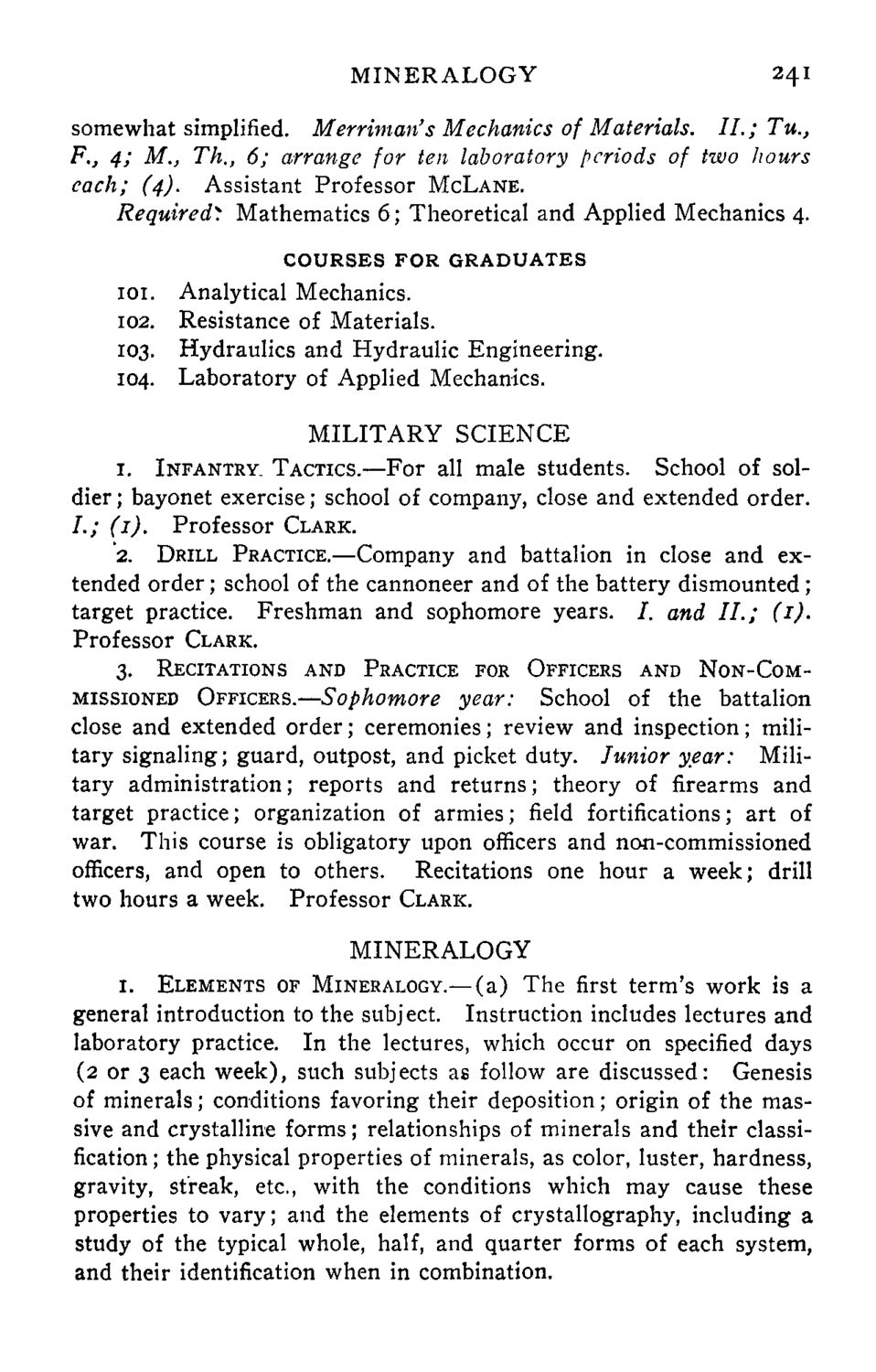Caption: Course Catalog - 1899-1900
This is a reduced-resolution page image for fast online browsing.

EXTRACTED TEXT FROM PAGE:
MINERALOGY 241 somewhat simplified. Merriman's Mechanics of Materials. II.; Tu., F., 4; M., Th., 6; arrange for ten laboratory periods of two liours each; (4). Assistant Professor MCLANE. Required": Mathematics 6; Theoretical and Applied Mechanics 4. COURSES FOR GRADUATES 101. 102. 103. 104. Analytical Mechanics. Resistance of Materials. Hydraulics and Hydraulic Engineering. Laboratory of Applied Mechanics. MILITARY SCIENCE 1. INFANTRY, TACTICS.—For all male students. School of soldier ; bayonet exercise; school of company, close and extended order. / . ; (1). 2. Professor CLARK. DRILL PRACTICE.—Company and battalion in close and ex- tended order; school of the cannoneer and of the battery dismounted; target practice. Freshman and sophomore years. / . and II.; (i). Professor CLARK. 3. RECITATIONS AND PRACTICE FOR OFFICERS AND NON-COM- MISSIONED OFFICERS.—Sophomore year: School of the battalion close and extended order; ceremonies; review and inspection; military signaling; guard, outpost, and picket duty. Junior year: Military administration; reports and returns; theory of firearms and target practice; organization of armies; field fortifications; art of war. This course is obligatory upon officers and non-commissioned officers, and open to others. Recitations one hour a week; drill two hours a week. Professor CLARK. MINERALOGY 1. ELEMENTS OF MINERALOGY.—(a) The first term's work is a general introduction to the subject. Instruction includes lectures and laboratory practice. In the lectures, which occur on specified days (2 or 3 each week), such subjects as follow are discussed: Genesis of minerals; conditions favoring their deposition; origin of the massive and crystalline forms; relationships of minerals and their classification ; the physical properties of minerals, as color, luster, hardness, gravity, streak, etc., with the conditions which may cause these properties to vary; and the elements of crystallography, including a study of the typical whole, half, and quarter forms of each system, and their identification when in combination.
|